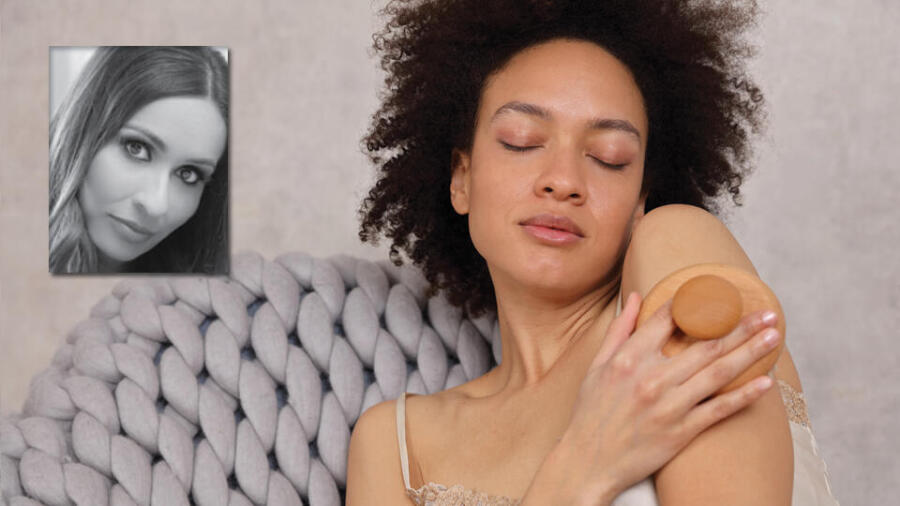2020 has left a lasting impact on all of us. Everyone found their own ways to cope with life in a pandemic. For some, online cooking classes and sourdough starters offered salvation. For others, bedroom explorations became a practical necessity — hence the incredible increase in pleasure product sales worldwide.
There was another component to personal health that also saw astronomical growth throughout 2020, and its market growth is not slowing down. I’m talking about self-care.
Self-care will become more customized to individual customers, almost gourmet in a way.
In 2020, self-care product sales reportedly exploded to $450 billion. Statistics show that 88 percent of Americans actively practice some form of self-care, and one third of consumers have increased their self-care behaviors since the pandemic began. Most consumers are using a variety of products together for maximum impact on their health and wellness, blending traditional category lines.
WHAT IS SELF-CARE?
Self-care is something an individual does regularly to help them live a healthy (or healthier) life.
According to coaching site Habits for Wellbeing, self-care has eight areas to practice: physical, psychological, emotional, social, professional, environmental, spiritual and financial. Self-care could be considered a holistic practice of caring for the entire body and mind, and not just individual parts of the body.
Ideally, each person uses their own methods of self-care to help them live a more balanced life.
Self-care is particularly important for women. According to the Women’s Institute for Policy Research, women have a higher incidence of anxiety and depression compared with men.
Self-care also means different things to different people. For one person, a relaxing bath is an intimate treat. For another, using a pH-balanced lubricant is how they care for their own body.
While forms of self-care such as drinking filtered water, getting plenty of sleep and exercising can be inexpensive or free, most consumers also want to feel and look good — which leads them to purchase self-care products that help fulfill these desires as well.
HOW CAN RETAILERS CAPITALIZE ON SELF-CARE?
In terms of sales, the opportunities are endless.
#1 First, look at your current assortment of products and see what seems like it would be good for self-care practices and rituals. While everyone is unique, certain standard items have become synonymous with self-care, such as baths, books, body lotions and CBD infusions. Look at your inventory in a new way to see how an all-natural lubricant or a personal massager can be marketed to customers looking to increase their self-care options.
#2 Next, create customized assortments according to your consumers. Putting a bath bomb and a waterproof massager together with a reminder to “Relax & Unwind” is likely to appeal to consumers looking for practical self-care solutions. Create multiple purchase opportunities for your customers to help them in their self-care practices.
#3 Offer personalized kits that provide self-care self-discovery. This doesn’t have to be putting multiple SKU’s into one basket. This could be a service that your store provides to its shoppers. The goal is to help your customers while achieving higher average sales.
#4 Create an intimate self-care section in your store, whether it’s online or brick and mortar. Be creative and inspirational. Curate your inventory and place products in this section that promote health and self-discovery.
#5 Earn your customers’ trust with a testing program. CVS Pharmacy launched its “Tested to be Trusted” program requiring all vitamins and supplements be tested for ingredient accuracy in order to be sold in their stores. Consider testing some of the brands and products carried in your store and then applying a “Trust This” sticker to the store shelf for products that you have had good experiences with.
FILL CONSUMERS’ NEEDS
When a customer mentions stress, lack of good sleep, or irritability, do you think they know that having an orgasm can help?
According to Medical News Today, orgasms can improve a person’s mood, relieve stress and lead to better sleep, all of which sound like great ways to care for oneself.
Share with your customers how they can create their own kit from a selection of products. A stay-at-home self-care kit could promote personal relaxation with a scented massage cream, silicone massager and erotic book. Help educate customers about how using lubricant, a clitoral stimulator, or cock ring is ideal for intimate self-care.
BECAUSE IT’S GOOD FOR YOU
According to Kearney, a global management consulting firm, self-care consumers are proactive and are open to experimenting with new products and services. They are concerned with prevention, along with their current needs.
This means toy cleaners to help curb possible bacteria and lubricants to minimize micro-tears are important to them — because they’re good for their health.
Know which products in your store can be helpful — and healthful — for your own customers.
THE FUTURE OF SELF-CARE
According to reports predicting the future of self-care, people will continue to be eager about practicing self-care and seeking a higher quality of life. Research shows that self-care will become more customized to individual customers, almost gourmet in a way.
As new intimate products are launched, keep self-care in mind and consider how products can be paired and better utilized by customers looking to expand their personal health.
Briana Watkins is a well-respected industry veteran and serves as the vice president of sales and marketing for M.D. Science Lab.









